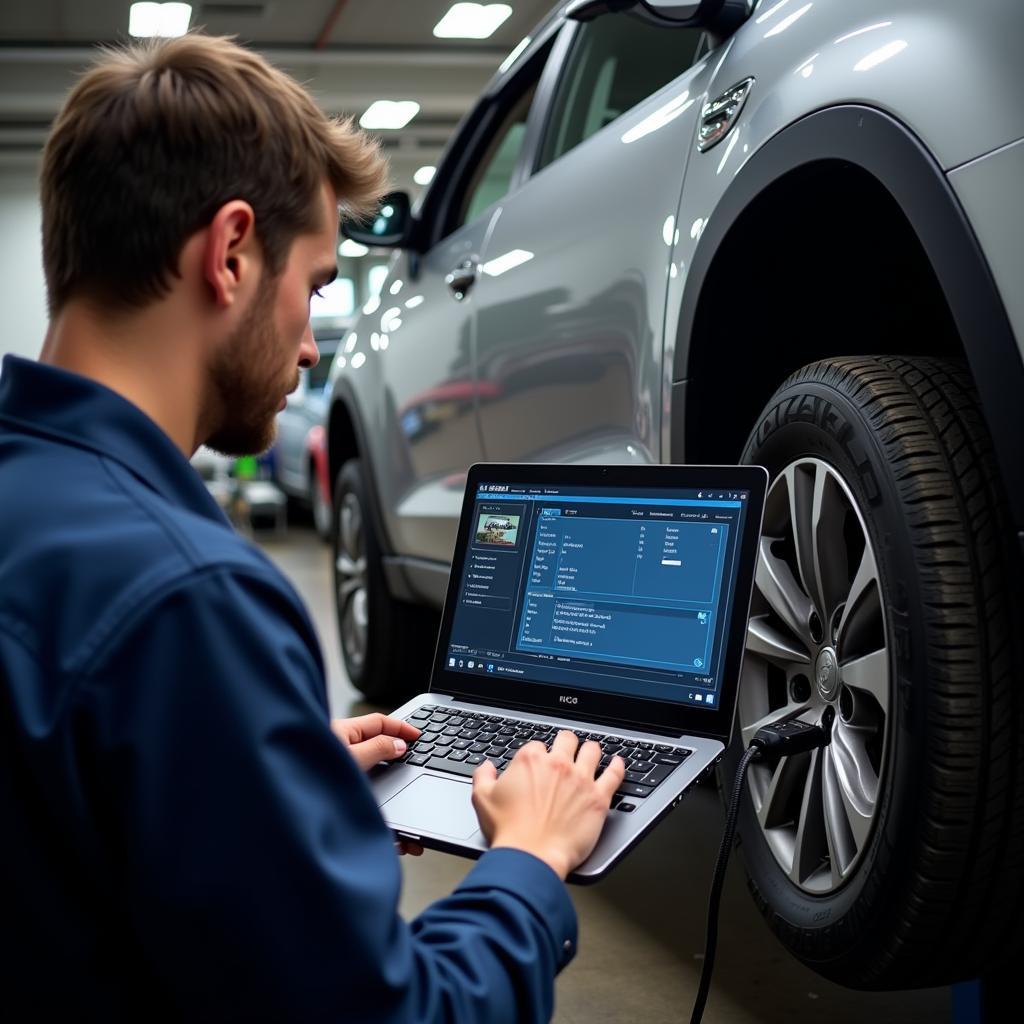Your cart is currently empty!

VCDS Remove Governor: Unleashing Your Car’s Potential
Using VCDS to remove a governor is a popular topic among car enthusiasts seeking to push their vehicles’ limits. This article will explore the intricacies of using VCDS (Vag-Com Diagnostic System) to remove or modify speed governors, addressing common questions, potential risks, and offering expert insights into the process.
Understanding Speed Governors and VCDS
Speed governors are electronic limiters programmed into a vehicle’s Engine Control Unit (ECU) to restrict its maximum speed. They are often implemented for safety reasons or to comply with regulations. VCDS, a powerful diagnostic and modification tool, can be used to access and potentially alter these settings. But before you even think about plugging in your VCDS cable, it’s crucial to understand the implications of removing a speed governor.
Why Remove a Speed Governor with VCDS?
Some drivers desire a higher top speed for track use or other specialized applications. Others might find the factory-set limit too restrictive. VCDS provides the interface to potentially adjust these limitations. However, remember that altering your car’s ECU can have unforeseen consequences and may void your warranty.
Is it Legal to Remove a Speed Governor with VCDS?
The legality of removing a speed governor varies depending on your location and the intended use of the vehicle. Check local laws and regulations before proceeding with any modifications. Using VCDS to tamper with emissions controls is illegal in many regions. Remember, safety should always be the top priority.
How to Remove a Governor with VCDS: A Step-by-Step Guide
While the specific steps can vary based on the vehicle’s make, model, and year, here’s a general overview of the process using VCDS:
- Connect VCDS to your vehicle’s OBD-II port. Ensure the ignition is on.
- Open the VCDS software on your computer. Select the correct control module (usually the Engine module).
- Navigate to the “Adaptation” or “Long Coding” section. This is where the speed governor settings are typically located.
- Identify the speed limiter parameter. Consult your vehicle’s specific documentation or online forums for guidance on finding the correct parameter.
- Modify the value. You might be able to disable the governor entirely or adjust the speed limit.
- Save the changes and test. Always perform a test drive in a safe and controlled environment after making any modifications.
“Modifying your car’s ECU is a serious undertaking. Always research thoroughly and proceed with caution,” advises John Miller, Automotive Engineer at Apex Automotive Solutions.
Potential Risks and Considerations
Modifying your car’s ECU carries inherent risks. Incorrectly altering settings can lead to performance issues, malfunctions, or even damage to the vehicle. Always back up your original ECU data before making any changes. If you are uncomfortable working with VCDS, consult a qualified automotive technician.
“A professional can ensure the modifications are done safely and correctly, minimizing the risk of complications,” adds Miller.
 Mechanic Using VCDS on a Car
Mechanic Using VCDS on a Car
VCDS Remove Governor: Conclusion
Using VCDS to remove or adjust a speed governor provides the opportunity to customize your vehicle’s performance. However, it requires careful consideration, research, and a clear understanding of the potential risks involved. Always prioritize safety and adhere to local laws and regulations. If you need further assistance or have questions about using VCDS, feel free to reach out. You can contact us at +1 (641) 206-8880 and our email address: vcdstool@gmail.com or visit our office at 6719 W 70th Ave, Arvada, CO 80003, USA. We’re here to help you navigate the world of automotive diagnostics and modifications with VCDS. We also offer VCDS tools on our site vcdstool.
FAQ
-
Can I restore the original speed governor settings after removing it with VCDS? Yes, if you have backed up your original ECU data, you can typically restore the factory settings.
-
Will removing the speed governor improve my car’s acceleration? Removing the governor only affects the top speed, not acceleration.
-
What are the common problems encountered when using VCDS to remove a governor? Incorrect coding or selecting the wrong parameters can lead to various issues, including engine malfunctions and limp mode.
-
Is it necessary to have a specific version of VCDS to remove a speed governor? A recent version of VCDS is usually recommended for compatibility with newer vehicle models.
-
Are there any alternatives to using VCDS for removing speed governors? Some vehicles might have aftermarket tuning options available, but VCDS provides more granular control over ECU settings.
-
How can I find reliable information about my car’s specific speed governor settings and VCDS procedures? Online forums dedicated to your specific car model and year can be valuable resources.
-
What should I do if I encounter errors or problems while using VCDS? Consult the VCDS documentation, online forums, or contact a qualified VCDS specialist.
by
Tags:
Leave a Reply